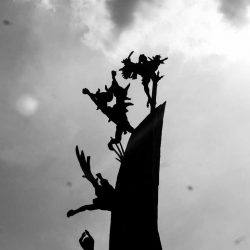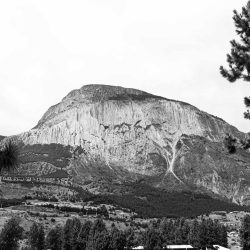To maximize confusion, the Chileans decided to not only have Patagonia as the name for the vast region between Puerto Montt and Punta Arenas, but also to name a new national park after it. Don’t be surprised if this will be the next big thing after Torres del Paine.
There really are too many national parks to choose from in Chile. And that is for a huge part thanks to American philanthropy, as explained beautifully in an article in National Geographic.
Doug Tompkins once founded outdoor clothing company The North Face (and sold it) and later the Esprit clothing label as well. He distanced himself from big business after cashing out, developing a huge passion for wildlife. He met Kris McDivitt, who had just left as CEO of that other huge outdoor clothing company Patagonia, who shared his passion. The couple married and set off to buy huge swaths of land in Chile and Argentina.
Initially there was a lot of scepticism. Their concept of rewilding was interpreted as ‘taking away agricultural lands’ instead of restoring important ecosystems, as was its intention. It took decades to build up trust with the locals and the government. Patagonia National Park is the crown of that work.
Merged with Chilean-owned land
Doug (who died during a kayak incident because of hypothermia in 2015) and Kris donated huge swaths of land to the Chilean state. Those areas were merged with already nationally owned areas and combined into national parks. Pumalin near Chaiten is a good example. Patagonia national park is even bigger and better, a combination of what used to be three different parks.
Rewilding efforts involve the reintroduction of pumas and jaguars. The concept is discussed worldwide, as it is a thin line between wild nature and managed nature. And it takes a lot of effort and patience.
Patagonia national park is extremely interesting because it is so varied. Instead of Torres del Paine, which really revolves around its impressive peaks, this one is much more about the animals and the landscapes, from Serengeti-like plains to beautiful lakes. It is by now managed by Conaf, the Chilean organisation responsible for all national parks, but in combination with the Tompkins foundation.
It being relatively new, it also means there isn’t yet as much infrastructure (lodges, guesthouses) in or near the park. But it also means the park is as of yet undervisited. And it’s free (unusual in Chile), just like Pumalin, because there are main roads running right through them so it would be too difficult to separate passers-by from visitors.
Practical information
The most important to know is probably that there are three different areas:
- Tamango: this is the area closest to Cochrane, around a one hour walk (follow the river northeast). If you want to take it relatively easy (guilty!), you can do the Los Carpinteros hike, which is around three hours. Combined with the walk to-from the village though it’s not as easy as it seems, but offers beautiful views over Lago Cochrane as a reward
- Chacabuco valley: when coming from Coyhaique/Perto Bertrand, this is the impressive mountain you see along the Rio Baker. There is an entrance road into the valley and towards the visitor center. There is a camping nearby. This is where the Lagunas Altas hike (around 5 hours) to some beautiful lakes starts. The Aviles loop through steppe is a whopping 25km further into the valley, and there are more options, including multi-day hikes
- Jeinimeni: this is the part furthest east, close to the Argentinian border. The 16km Lago Chico hike is here, a great round-trip
Challenges
Now there are unfortunately two big challenges here:
- transport: if you don’t have a car, it is tedious to get here and especially get back. Regular buses can stop at the entrance near the river, but it is still 11km to the visitor centre. Hitchhiking is your only option here. For the way back you have to hitch all the way back to Cochrane, 18km still when on the main road. Manageable, but not easy, especially when you finish a hike late in the day. Private accommodation (taxis, vans) are an option from Cochrane but often rather expensive. Getting deeper into the park into the Jeinimeni section of course is even more tedious. Apparently you can reach that part by boat as well from the eastern edge
- accommodation: either you camp here or pay big money in the lodge. This is where Patagonia national park feels very similar to Torres del Paine unfortunately
Official information:









